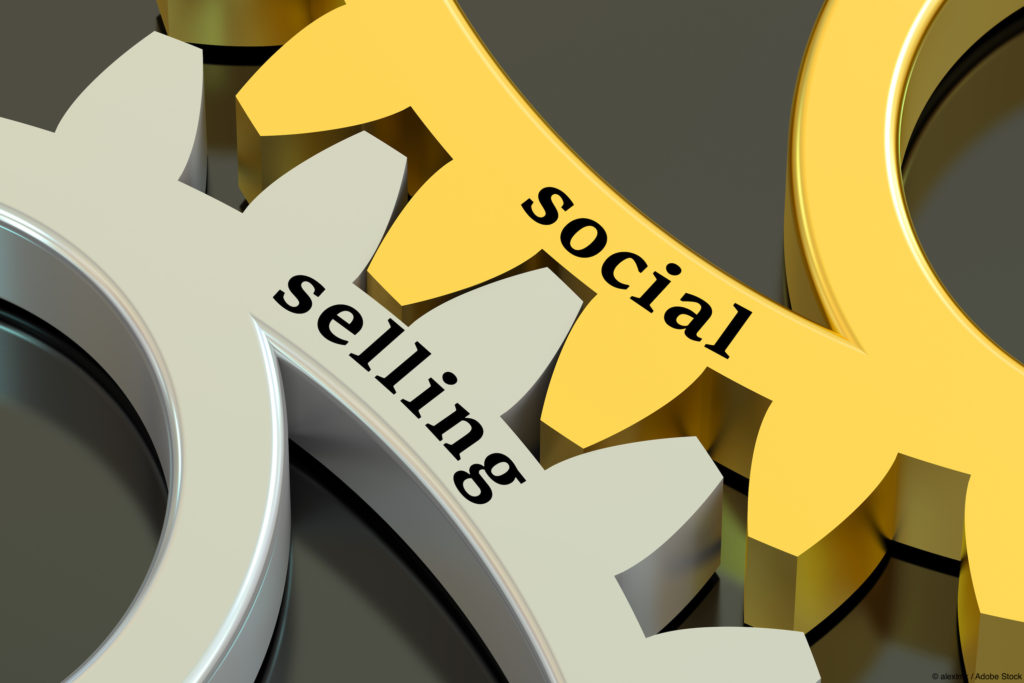 A lot of people confuse social marketing with social selling, but they’re two entirely different things. Examples of social marketing include Facebook ads or boosted posts, or sponsored posts on Twitter. In these instances, you’re overtly making a pitch to get someone to buy something. Social selling, on the other hand, is much subtler. It’s about building relationships by engaging with prospects online and sharing valuable, wanted content with them long before anything is bought or sold.
A lot of people confuse social marketing with social selling, but they’re two entirely different things. Examples of social marketing include Facebook ads or boosted posts, or sponsored posts on Twitter. In these instances, you’re overtly making a pitch to get someone to buy something. Social selling, on the other hand, is much subtler. It’s about building relationships by engaging with prospects online and sharing valuable, wanted content with them long before anything is bought or sold.
Social selling should be a critical part of your sales process these days. And, if you aren’t social selling, chances are you’re leaving money on the table. Seventy-eight percent of social sellers outsell their peers who don’t use social media.
In other words, social selling requires you to engage in a non-sales manner, but with the intended goal of cultivating a connection until they eventually become someone you’ll approach about your product or service. Or, even better, they approach you.
The buying process is changing
It was bound to happen. As people spend increasingly larger amounts of time online, and as buyers continue to use the web to conduct their own research and gather opinions prior to purchase, social selling is rising. In fact, according to Forrester, 68 percent of B2B customers now prefer to do their own research independently online.
The old sales model of cold calling, scheduling demos, and attending trade shows is still here, but the sales team as the gatekeeper to information is rapidly losing ground. Instead, decision-makers tend to look to their peers when searching for solutions to their pain points. This means they’re often turning to social media to be educated and engage with like-minded people who also influence their purchase. That’s why you need to be on social media, too.
Three tips for effective social selling
If you already have a profile or account on one or more social networks, then you may already be practicing some form of social selling without even being fully aware of it. But are you doing it right?
Here are three key tips for effective social selling:
- Know where to find prospects. While it’s good to be active on multiple social channels, LinkedIn is probably the best network for making B2B connections. However, Twitter and Facebook also have their moments in terms of generating solid B2B leads. On Twitter, you can find, follow, and engage with prospects by searching on specific hashtags such as #cybersecurity, #medtech, or #CRM (depending on what you’re selling). While business decision-makers may be on LinkedIn during the day, the majority of them are also on Facebook during the evenings and weekends. You can also join any number of B2B Facebook groups. For example, there are more than a half-dozen dedicated to supply chain professionals. Regardless of the social channel you’re on, all have ways to identify people you want to get to know.
- Interact regularly. The need to regularly share quality content is a given, but social selling is about more than just posting your own subject matter expertise. If you see useful content that someone else has provided, share it. You’ll strengthen your connection with the original source, who might just share your content with their network in return. You should also initiate conversations with others by commenting on their posts with helpful insights, or by posting thoughtful questions in your feed that can open a dialog. Social listening is another way to find and contribute to conversations.
- Be authentic. As previously stated, the key to social selling is leveraging the power of relationships. Digital relationships aren’t that different from the real world—trust is essential, and they take time to develop. Too many people take this for granted on social sites such as LinkedIn or Twitter and send sales-heavy messages immediately upon adding a new connection. Instead, posting content with relevance and value helps to showcase you as a credible and trustworthy contact. By engaging with prospects through their posts, messages, or LinkedIn groups over time, you build that relationship so when a need arises, you’re top of mind as a resource.
Most everyone is a member of one or more social networks these days, but too many of us—businesses as well as individuals—create an account or profile page and don’t do much else with it. That needs to change, especially for those who want to establish relationships with prospects who are increasingly bypassing the traditional sales model.
Turning LinkedIn connections or Facebook friends into prospects takes time, but it can be well worth the effort.
If you need help building your social selling strategy, connect with us.

